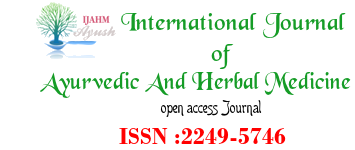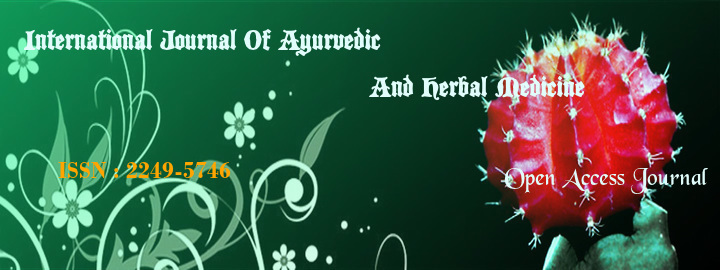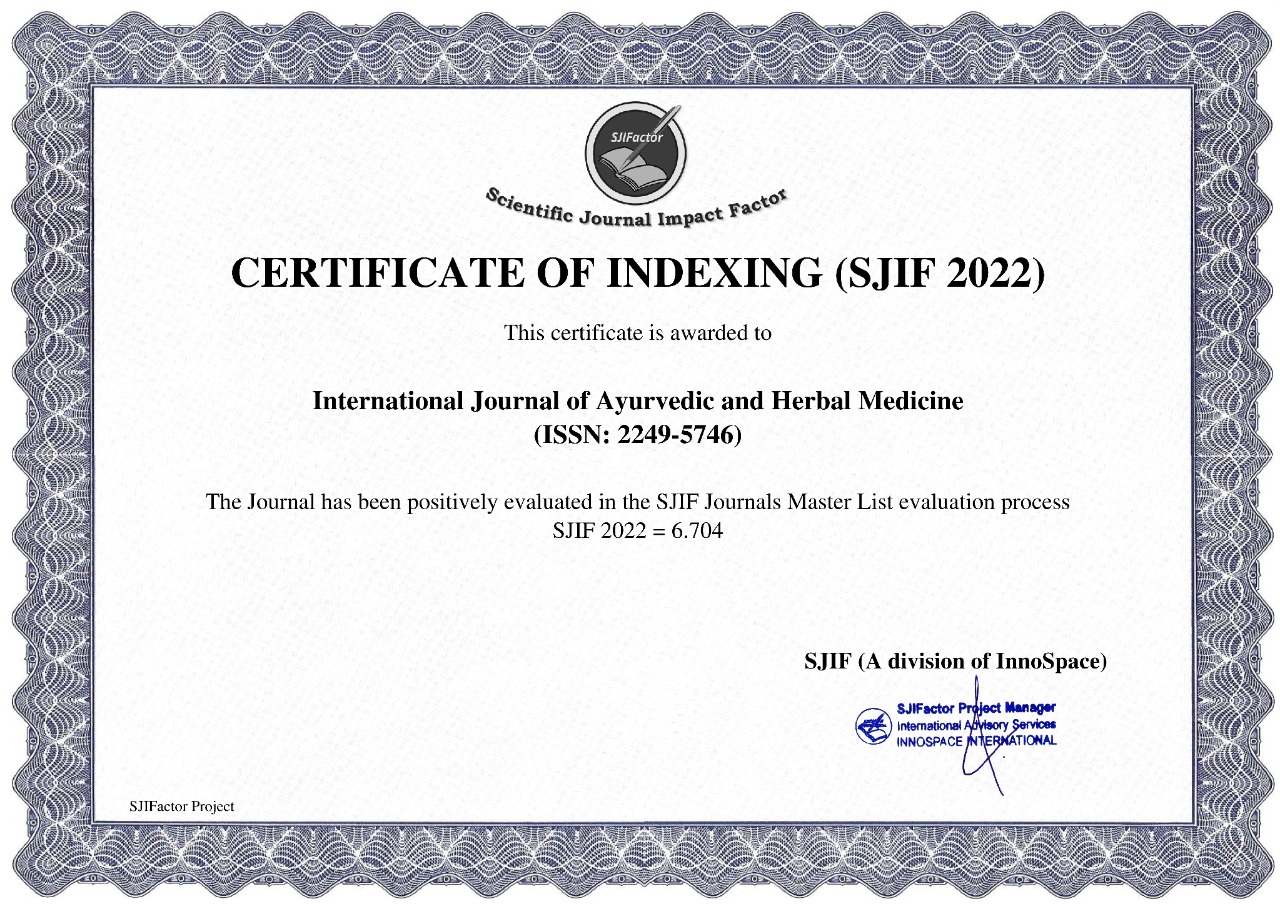


1Dr. Ritika Shah , 2Dr. Ekta Tomar , 3Dr. Nilesh Suryavanshi
DOI : http://dx.doi.org/10.18535/ijahm/v7i4.31
1MD (Scholar), Department of Rasashastra & Bhaishjya Kalpana, School of Ayurveda, D.Y.Patil Deemed to be University, Navi Mumbai, Maharashtra, India
2Associate Professor, Department of Rasashastra & Bhaishjya Kalpana, School of Ayurveda, D.Y. Patil Deemed to be University, Navi Mumbai, Maharashtra, India
3Associate Professor, Department of Rasashastra & Bhaishjya Kalpana, School of Ayurveda, D.Y. Patil Deemed to be University, Navi Mumbai, Maharashtra, India
ABSTRACT:
Fungal infections are increasing due to immuno-deficient states like Diabetes Mellitus, HIV, wide spread use of broad spectrum antibiotics (DanielleOfri OTC antibiotics), steroids etc. The aim of the study is to assess the antifungal activity & determine the zone of inhibition of Arka Tail on fungal strains of Candida Albicans and Aspergillus Niger. Candida Albicans causes candidiasis, which commonly occurs in mucous membrane in mouth or vagina due to lack of hygiene & weakened immune system. Aspergillus Niger is an air-borne pathogen commonly causes otomycosis which is a ear disorder. Antifungal activity on these two strains was seen using Agar Cup Diffusion Method and Minimum Inhibitory Concentration (MIC) was determined using Tetrazolium Salt Method on fungal strains. The drug was effective and exhibited a significant activity against C. albicans and A.Niger.
Keywords: Antifungal, Aspergillus Niger, Candida Albicans, Arka Tail, Fungal infection.
Reference:
1. Isenberg, Henry d. Clinical microbiology procedure handbook. 2nd edition.
2. J. Pelczar, JR., E.C.S. Chan, Noel R. Krieg. Microbiology. New Delhi : Tata McGraw-Hill Publishing Company Limited, 2007, fifth edition.
3. Sastry, Dr. J.L.N. Dravyaguna Vijnana (Study of the Essential Medicinal Plants in Ayurveda). Varanasi : Chaukhambha Orientalia, Third edition 2008. 978-81-7637-093-6 (Vol. II).
4. Trikamji, Acharya Yadavji. Ayurveda Dipika Commentary of Chakrapanidatta. Varanasi, India : Chaukhamba Surbharati Prakashana, 2008, Reprint edition 3-5 Vol 26.
5. Keir, G. J., Garfield, B., Hansell, D. M., Loebinger, M. R., Wilson, R., Renzoni, E. A., & Maher, T. M. (2013). Cyclical caspofungin for chronic pulmonary aspergillosis in sarcoidosis. Thorax, thoraxjnl-2013.
6. Indian journal of chemistry, March 2007; 46550-55
7. National Committee for Clinical Laboratory, Standards. Methods for Dilution, Antimicrobial Susceptibility Tests for Bacteria that Grow Aerobically Approved Standard, (M7A5), 5th ed.; National Committee for Clinical Laboratory Standards: Wayne, PA, 2000.
8. Shadomy, S. In Manual of Clinical Microbiology; Albert, B.,Ed.
index























